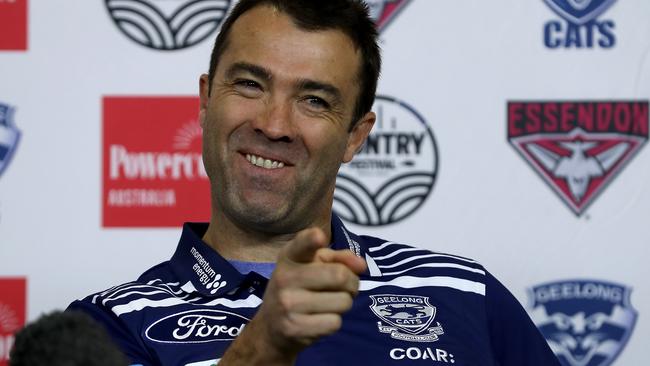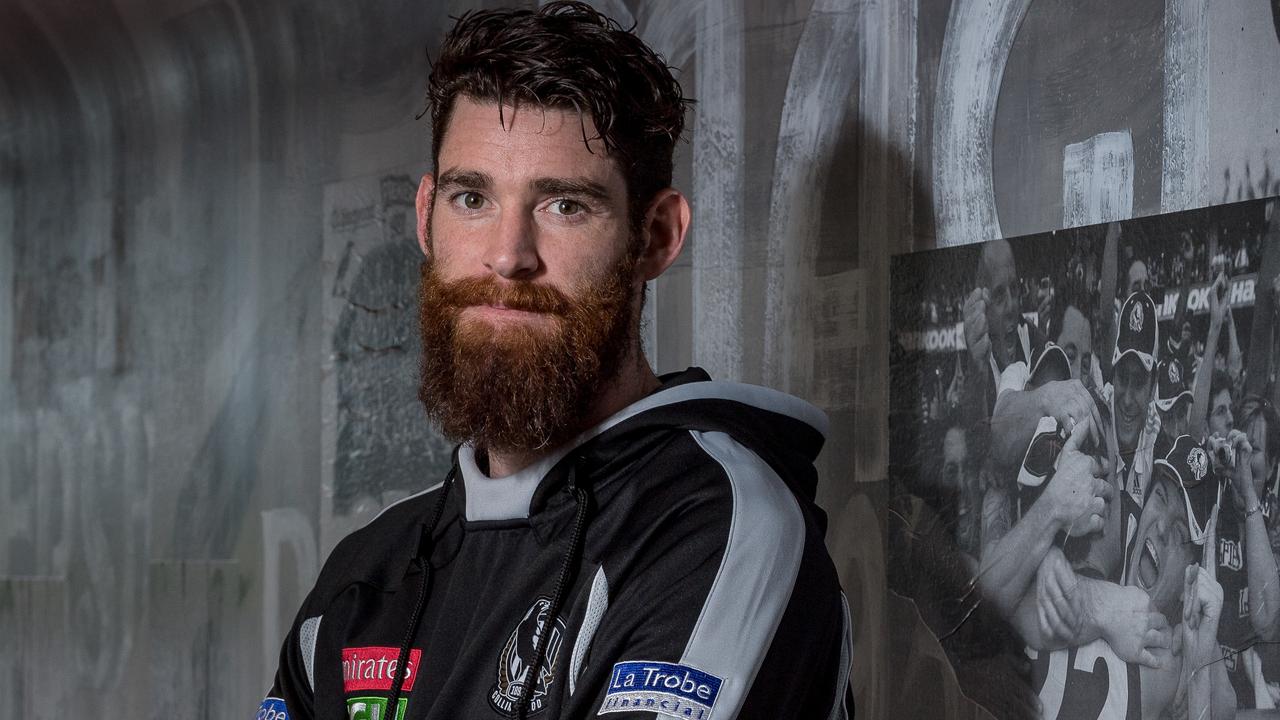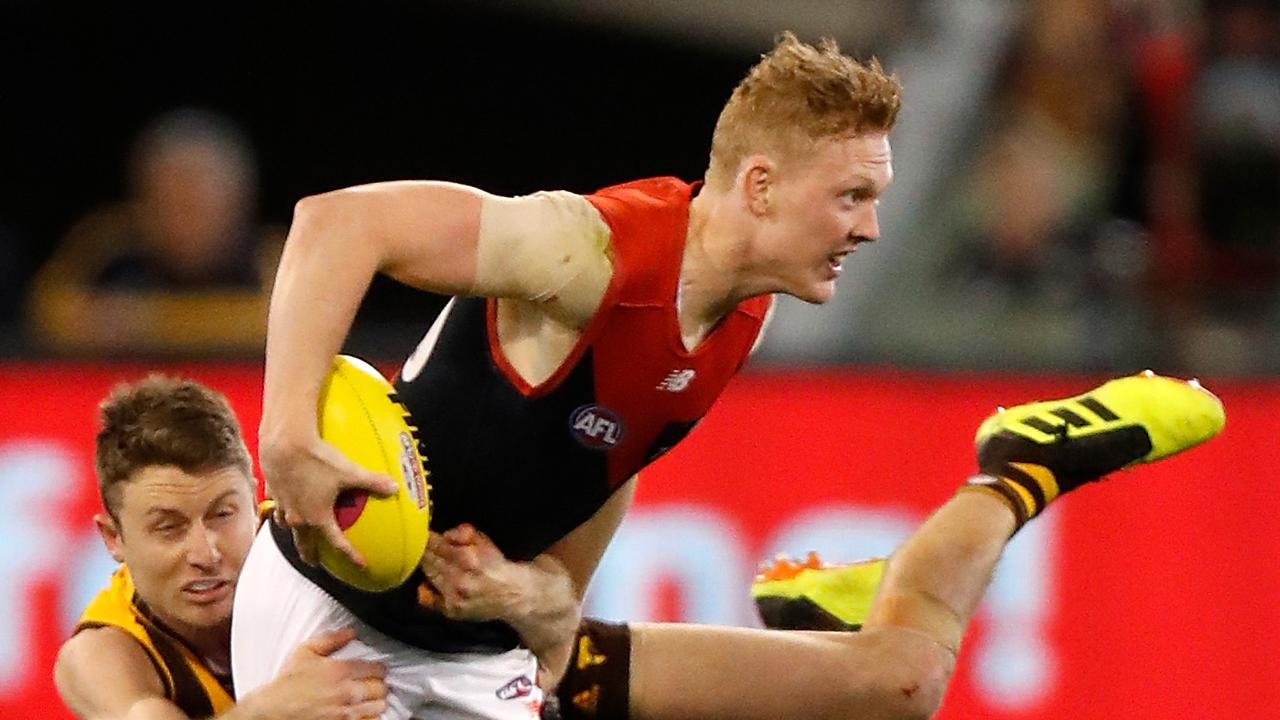Geelong’s premiership credentials are in tatters after preliminary final overcorrection
CHRIS Scott has overcorrected after an infamous preliminary final defeat and Geelong’s premiership credentials are flagging as a result, writes Matthew Lloyd.

CHRIS Scott has overcorrected after an infamous preliminary final defeat - and Geelong’s premiership credentials are flagging as a result
Geelong is third after seven rounds of football yet they continue to be the Jekyll and Hyde side of the AFL.
For Cats supporters going along to games, they would have no confidence whatsoever of what sort of football their team is about to play from one quarter to the next, so good luck predicting what could happen from one match to the next.
BOOM OR BUST: WE RATE EVERY CLUB’S OFF-SEASON RECRUITS
CATS SPEARHEAD: GOING OK: HAWKINS WANTS CONSISTENCY
ROUND 8 TEAMS: TRELOAR OUT, BULLDOGS REGAIN REDPATH
Geelong’s 5-0 start flattered them and after two successive losses in the past fortnight — to Collingwood and Gold Coast — Scott labelled the football his side was playing as mediocre. You wouldn’t find anybody arguing with him on that score.
It was an honest but fair assessment from a coach who would be extremely frustrated with the way his team is playing, despite their positive win-loss record.
Geelong is playing a different brand of football to that of last year and I believe there is a clear reason for that.

Geelong’s preliminary final last year was over by quarter-time due to Sydney’s midfield dominance early. But by the end of the game Geelong had recorded 32 more inside 50s than Sydney yet kicked just eight goals in total for the match.
Chris Scott would have walked away from that game and thought to himself, how can I structure up my side differently so if we get our chance again, we will kick more than a paltry eight goals from a whopping 72 inside 50s.
The Cats were brilliant defensively last year and most of those inside 50s were due to Geelong’s ability to press all their players high up the ground, which didn’t allow Sydney to get the ball out of their defence for sustained periods of the match.
Repeat entries is the term for it in the modern game and along with the Western Bulldogs, the Cats were the best at it.
The Cats look to have made a tactical shift this year by defending deeper in their defensive half instead of the front-half press. This creates more space in their attacking half of the ground when they win the ball back, which has helped their scoring and efficiency going forward this year.
This is the dilemma Chris Scott now faces.

The Cats have improved their attack, scoring two more goals a game than they did last year but defensively, they have become a shambles.
It looks to me that they have overcorrected in the off-season in reaction to that losing final. What was their major strength has become their biggest weakness in 2017.
Geelong conceded only 72 points a match last year but it’s up to 92 points this year and they have also gone from the third hardest side to score against when the opposition goes inside 50m to 13th this year.
Geelong held the ball in their attacking half of the ground for nine minutes more than their opposition in 2016, which put enormous pressure on the opposition defence and allowed for Geelong to control field position all over the ground.
This year, they are -5 minutes so in the desperation to improve their attack, they have lost their area of strength which took them to a top-two finish after the 2016 home and away rounds.
Questions are being asked of club stalwarts Tom Lonergan and Harry Taylor as they hit the twilight of their careers but along with the rest of their defensive group in Tom Ruggles, Andrew Mackie and Zac Tuohy, they are constantly under siege.

The Gold Coast Suns had 71 inside 50s last week, which is unheard of.
That is unforgivable from the forwards and midfielders who refused to apply any pressure on countless occasions.
Collingwood and the Suns over the past two weeks have continually ran and carried the ball from one end of the ground to the other to create scoring opportunities. Collingwood had not been able to do that to any other side in the competition yet they opened up Geelong and helped themselves to 32 scoring shots.
As good as Patrick Dangerfield is, Joel Selwood remains the heartbeat of this Geelong side. Selwood willed his side over the line against St Kilda in Round 5, gathering 39 disposals and was massive in the last quarter in what was the Cats’ best win of the season.
Selwood averaged 32 disposals a match during the Cats’ unbeaten run over the first five weeks which included seven clearances and nine score involvements a game.
In the Cats’ two losses, those numbers have fallen to 20 disposals a game, four clearances and four score involvements.
Too much is left to too few at Geelong but that has been said for almost 18 months now.
Mark Blicavs, Steve Motlop, Cam Guthrie, Jordan Murdoch, Aaron Black, Darcy Lang and rucks Rhys Stanley and Zac Smith just don’t do enough, often enough.
Geelong is in a terrific ladder position and there are 12 clubs below them who would love to have their win-loss ratio but the way the Cats are currently playing, I believe they are further away from a premiership now than they were at any stage of last year.



